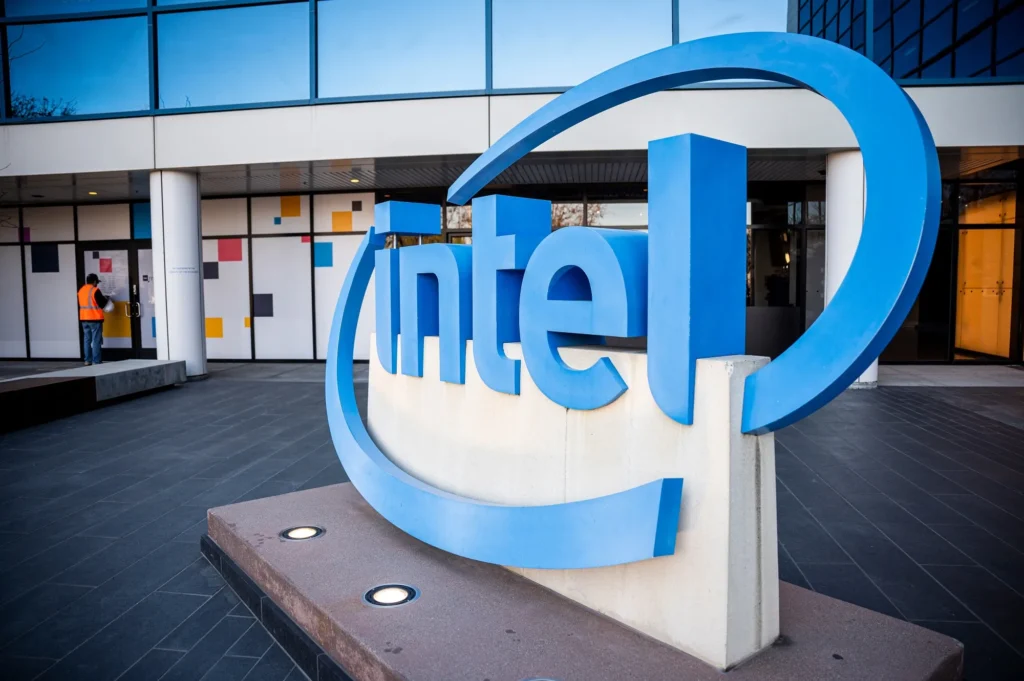quickutilities – President Donald Trump announced that the US government will acquire a nearly 10 percent stake in chipmaker Intel. He revealed the news during a press conference on Friday, though officials have yet to issue a formal statement. Reuters previously reported plans to convert Intel’s CHIPS Act funding into equity.
The deal followed a meeting between Intel CEO Lip-Bu Tan and President Trump. Trump said Tan initially wanted to keep his job but ended up agreeing to provide $10 billion to the US government. Trump stated, “So we picked up 10 billion,” referring to the government’s investment.
Read More : Gayton McKenzie Investigated Over Past Racial Slurs
Intel later clarified the details in a press release. The company said the government will invest $8.9 billion in common stock. This investment includes $5.7 billion from previously allocated CHIPS Act funds and $3.2 billion from the Secure Enclave program. Intel had already received $2.2 billion in CHIPS grants, bringing total government funding to $11.1 billion. The government purchased shares at $20.47 each, which translates to a 9.9 percent ownership stake.
It is important to understand that the government’s investment is not a grant or free money. Instead, it gives the government shareholder voting rights, although the stake is considered passive. Intel assured that the government will not seek board representation and will generally vote with the company’s board. There are limited exceptions where it may vote independently.
The CHIPS Act originally promised Intel up to $10.86 billion to boost domestic chip manufacturing. Intel’s CEO Lip-Bu Tan likely agreed to this equity arrangement to ensure continued funding and support for the company’s US operations. Tan took over the CEO role in 2024 after Pat Gelsinger retired abruptly. Since then, he has implemented a 20 percent workforce reduction to reduce costs and stabilize Intel.
Intel’s Challenges and Government’s Broader Semiconductor Strategy
Despite cost-cutting measures and government investment, Intel faces ongoing challenges. The company reportedly struggles to produce its next-generation Panther Lake chips at scale. Intel’s future remains uncertain as it competes in a highly competitive semiconductor market.
The Trump administration stated it will not seek similar equity stakes from other CHIPS Act recipients. However, it has pursued other unique financial arrangements. For example, NVIDIA and AMD reportedly agreed to give the US government 15 percent of their profits in exchange for export permissions to China.
This investment marks an unprecedented move for the US government, which is taking a direct financial stake in a major tech company. The goal is to strengthen domestic semiconductor production and secure supply chains amid global competition.
Read More : Samsung Unveils 8TB Flagship for 9100 Pro NVMe Series
Intel’s deal may serve as a test case for balancing government support with private sector independence. The company’s cooperation ensures it will continue to receive federal funding needed to expand manufacturing capacity in the US. As the semiconductor industry evolves, government involvement may increase to protect national interests. Intel’s partnership with the US government reflects broader efforts to boost innovation, create jobs, and maintain technological leadership.
Investors and industry watchers will closely monitor how this investment impacts Intel’s operations and governance. The deal could influence future policies on government participation in strategic industries. Overall, the collaboration aims to secure the future of American semiconductor manufacturing.


